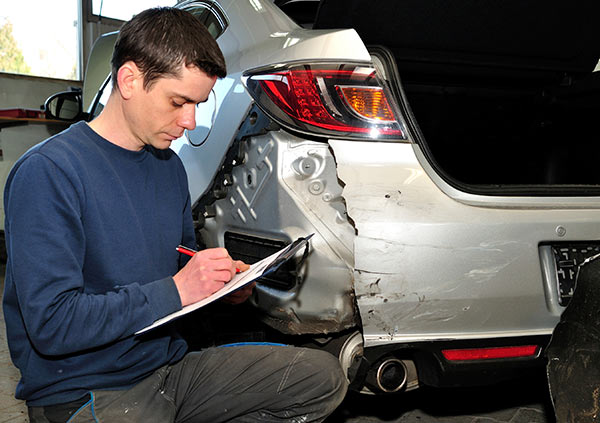Vehicle repair has evolved to become increasingly more complex and difficult especially with newer cars featuring ADAS technologies and smart sensors. This is one of the main reasons the average cost of collision repair has steadily increased year over year. These complex systems are often hidden and linked in ways that require a much more technical, and lengthy, repair. This is why your vehicle’s manufacturer has official documented repair procedures to outline proper and safe repairs. These are called OEM (Original Equipment Manufacturer) procedures.
Unfortunately, these OEM specifications are not legally required to be followed and it is completely the repair shop’s discretion to follow them or not. If a body shop chooses to not follow these repair procedures, it could jeopardize the integrity of your car’s safety features and increase the risk of another accident. Why would some shops choose not to follow OEM procedures? Researching these repair protocols require additional time which impact the overall repair cycle time. “Cycle time” is what a body shop calls the length of time your car is in the shop receiving repairs until you have it back in your possession.
For some shops, their main goal is to get cars in and out as fast as possible and reduce the cycle time. But a good collision repair center will take the needed time to fully evaluate what needs to be repaired as well as research your specific car’s manufacturer specifications. They will partially take your car apart to make sure nothing is missed when assessing what is damaged since what appears on the surface is always just the tip of the iceberg. This is often why your original repair estimate will not be set in stone and you will hear the two words: additional damages.
Additional Damage 101
You will never experience taking your car in for repairs and the first estimate you receive is the total inclusive cost for the repair from start to finish. There are always going to be additional damages hiding beneath the surface that will only be revealed once a technician partially disassembles your vehicle. Once they start looking under the covers, they can provide a more in-depth assessment of what is needed to full repair your vehicle.
Once the technician is able to inspect beneath the hood, much like an X-Ray or MRI a doctor would use to get an accurate diagnosis, they can modify the repair plan. This means the estimate will be revised and often the end result means an increase in the overall repair costs. This is all because of additional damage.
Insurance Company
It is completely normal that a body shop will find additional damage on your vehicle. In fact, it would be strange for them not to find more things that need to be repaired. At this point they will contact you and your insurance company before they start working on repairs. Your insurance company will send out an adjuster to approve the new repair amendments. The good news is your deductible will remain the same no matter how pricey the repairs may get, the bad news is there may be delays because of coordinating with an adjuster and dealing with the insurance company’s review process.
Sometimes the insurance company will be reluctant to pay for the additional damages. This is when a second opinion will come in handy which, once again, may cause delays. This is in your best interest to ensure you receive the most complete repair you deserve.
Additional Steps
There are certain areas on your car that have a higher tendency to require supplements to the original estimate. Those include: Front & Rear Suspension, Electrical, and Rear Body & Floor. These parts require additional steps like calibrations or destructive weld tests which means more labor time and by default an increased estimate cost. Those additional steps are line items on estimates often overlooked, but crucial to ensuring the safest and most complete repair. Without calibrations your safety technology systems and sensors may not work properly. If a technician skips a destructive weld test it could mean welding the wrong types of metals together putting you and your passengers at risk.
Unique Repair Plan
Every accident, car make and model are as unique as the individual that owns it. Repairs are not a cookie cutter, one-size-fits-all process. Its up to the body shop to formulate a specific and unique repair plan. Some plans are as simple as 20 steps while others are hundreds of steps. Your initial estimate will usually only cover the general over arching steps before your car is fully evaluated. After your car is disassembled, revealing additional damages, will the repair plan list grow to include more steps.
Who In Pennsylvania Can I Trust?
3D Collision Centers have 7 different locations serving you with top quality and guaranteed repairs. We are customer-focused and know what it means to perform a safe repair. At 3D Collision, all of our technicians have received extensive training and are up-to-date on the latest OEM Repair procedures. We will work with you and your insurance company to ensure a stress-free repair. We are proud to be industry leaders and take pride in our clean and comfortable facilities.
Schedule an appointment or get an online quote today! Or, feel free to give us a call at (877) 692-7776. We look forward to hearing from you








